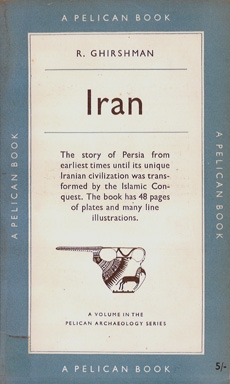|
EDITORIAL FOREWORD
By M. E. L. Mallowan
Professor of Westem Asiatic Archaeology, University of London
Much of R. Ghirshman's book on Iran was conceived and written in Susa, the Achaemenian royal city at which for many years the author has been directing excavations. That is why aswe read on we begin to feel the breath ofIrao, for to turn over the soil is to become a part of the land. The author has also enjoyed the unique experience of digging at Siyalk, one of the oldest prehistoric towns, as well as at centres of the Sassanian culture which brings his story to a close, c. A.D. 650. Thus on the most modest estimate this survey must embrace a period of not less than four and a half thousand years.
No one living could hope or pretend to give a final and authoritative verdict on the scores of complex problems that arise in the course of this study; but no one has a better title than the author to express his views in a direct narrative which must inevitably at times leave aside the more difficult and controversial aspects of the evidence. This television of antiquity must often hold our fascinated attention: the prehistoric potpainters of Bakun; the arrival on the Plateau of the first horsemen bedecked with trappings which inevitably give rise to the problem of Aryan origins; the windowed palaces of Persepolis; Darius III fleeing before Alexander; the Roman Emperor biting the dust in front of the Sassanian, and a hundred other scenes. We learn also about that inviting front door to Iran at the south-east end of the Caspian Sea through which time and again irresistible tribes of invaders forced their way from the steppes of Central Asia and renewed the life-blood of the country. Then there is the intriguing variety of religions, Zoroastrian, Christian, Mazdakite; it is enthralling to read of the Mazdakite creed, a kind of Platonic communism, born of despair under the Sassanian Empire, of its extinction and its consequences. It is not difficult to see that the Iranian problems of to-day are but a projection from its past, a past brightly illuminated by the work of archaeology. It is hoped that readers who wish to go into these matters more deeply will be tempted by the short bibliography annexed to find further enjoyment in the rich heritage of Iran.
The translation proved to be no easy task, and is mainly the work of Miss Margaret 11unn-Rankin, Lecturer in Near Eastern Archaeology at the University of Cambridge. Miss Diana Kirkbride revised the first version and checked many passages. The Editor is much indebted to these two colleagues for the care and thought which they have devoted to this work, and must himself take responsibility for inevitable defects. We have attempted to turn the French into reasonably Huent English without losing the Havour of the original language. On the other hand there are times when the English is a paraphrase rather than an exact translation; a few sentences have been expanded, and occasionally a footnote or a slight addition has been made where the original sense seemed to be compressed; a few passages have for various reasons been omitted. For any inadequate rendering we must ask for indulgence, more especially from the author himself, whose French edition, L'Imn des origines a I'Isla!1J (Payot, 195 I), but with fewer illustrations, must be regarded as the authoritative version.
Iran: From the Earliest Times to the Islamic Conquest
Introduction
The Physical Aspect of Iran
The Iranian Plateau is a triangle set between two depressions, the Persian Gulf to the south and the Caspian Sea to the north (Fig. I). Further, as a bridge between Central and Western Asia, it forms a promontory which links the steppes of inner Asia to the plateau of Asia Minor and beyond to Europe. Geography can thus account for the historic part which the Plateau was called on to play in the course of thousands of years of human history.
The triangle is bounded by mountains rising round a central depression, a desert region formed by the bed of a dried-up sea. The western mountains, or Zagros range, run from north-west to south-east, and are over 620 miles in length and 120 in width. The chain rises to between 3280 and 5570 feet and consists of numerous parallel folds, enclosing valleys 30 to 60 miles long and 6 to 12 miles wide (Fig. 2). Below the pastures on the higher slopes of these mountains stretch the remains of what were once dense forests of oak, walnut, evergreen oak, wild almond and pistachio. Lower down in the high valleys grow vines, figs, and pomegranates, and there is wide cultivation of wheat, …
| 